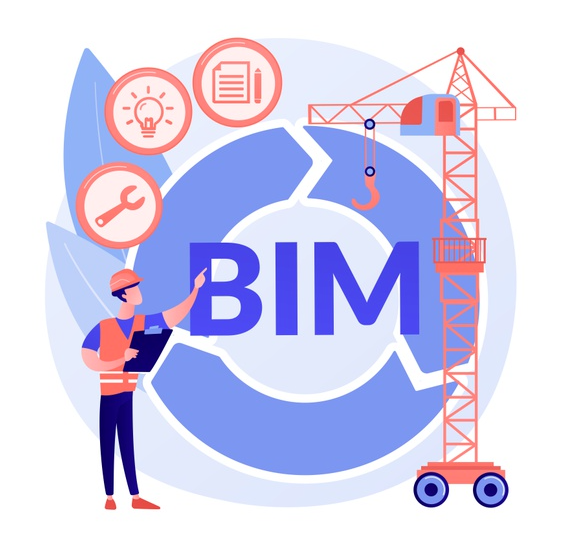In the construction industry, there is no standard requiring that a project stay in the same file format throughout the building and designing process. All parties involved in construction can import and export the same file in various formats.
2D drawings will be passed on from person to person, going through formatting to formatting. What if there was an easier way to exchange information? What if we could gain time, data, money, all the while keeping our productivity up?

Here are the downsides to a non-BIM system, and better ways to apprehend it. Building Information Modeling (BIM) was invented to allow for less rework, and thus less mistakes.
BIM technology amplifies the collaboration factor, and helps create 2D plans design and 3D models filled with data which can follow the building throughout its life cycle. BIM makes room for large efficiency gains, from time to information exchange between softwares.
In the construction process for a new project, be it a custom home or a building, the client is the first one with a 3D idea in his mind of this dream project. Yet, not everyone involved in the construction will be in touch with the client.
In fact, most workers will not hear from the client at all.
What ensues is a game of Telephone where the goal is to follow as closely as possible the client’s vision, who expresses his vision to the project manager, who sketches the project and gives it to the architect, who will draw various cuts of the projects in 2D: ground floor, first floor, roof, land, facades, vertical sections. Put together, his drawings create a 3D visualization of the project.

But they are still isolated 2D plans. The project can only come together if all plans are looked at as a whole. Even then, drawing all these different angles and floors and sections is time-consuming. A drawing can only portray one point-of-view.
Yet, in order to build anything, a must-have is various angles to get a good overview of the project. A project will therefore be drawn in many angles, through various lenses. This is time-consuming and expensive. These drawings will go into the hands of dozens of people: Construction managers, builders, contractors, sub-contractors, mechanical, electrical, plumbing and civil engineers, etc. Each one of them will have their own method and BIM software.
Your digital modeling will be dragged from software to software through different file formats. Going from hand to hand, the initial project is bound to lose a few feathers on the way to design and construction. In the industry, format and file loss is a constant. Missing data can be added by hand. But where humans intervene, the risk of forgetting is common. Not only that, but the time spent on importing, exporting, re-creating a single project is a time-consuming behavior. A person has to intervene, transfer the files to another software, a time they could be spending doing something more productive.
If something goes wrong during the process, not only is it hard to place the blame, but the end result remains. It will be up to the foreman to solve the issue by whatever means… even if they aren’t up to the client’s tastes.

In today’s world, one must be performant. The timeframe, the cost, the communication… The competition is so fierce that every single aspect of the chain of action must be improved. The non-BIM process worked for hundreds of years and managed to give amazing results. But the world is changing, reaching for more technological advances.
BIM takes one drawing and transforms it into the ultimate toolbox. The drawing can have all the necessary information for many, if not all construction workers.
BIM is one of these major improvements that must be taken in stride in order to rise above the competitive market. BIM is gaining popularity but its use is not yet widespread. Now is the time to make the most of it.
